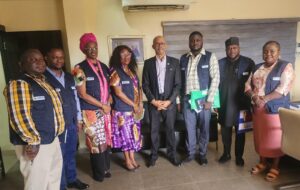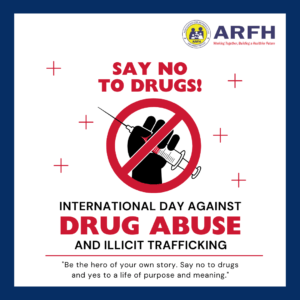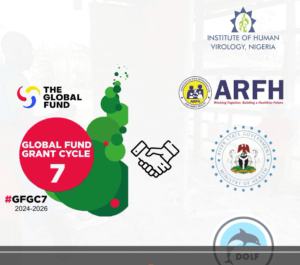Human Immuno-deficiency Virus/ Acquired Immune Deficiency Syndrome (HIV/AIDS) is reversing many of the hard-won development gains in many sub – Saharan countries including Nigeria and leaving populations more vulnerable to poverty, malnutrition, ill health, and mortality, especially infant mortality. The adverse effects of the AIDS epidemic are felt most severely in some of the world’s poorest countries in sub-Saharan Africa, where one of its consequences has been an upsurge in the number of children orphaned as a result of death of both parent due to complication from AID. HIV/AIDS not only orphans children but also makes children more vulnerable in a number of ways.
The epidemic influences child survival both directly through mother-to-child transmission and indirectly through diverting resources and attention away from children to the care and treatment of a sick parent. In several sub-Saharan African countries including Nigeria, infant and child mortality rates have already risen substantially and are expected to increase further in the coming years (Ainsworth, Beegle, & Koda, 2005; NDHS, 2008). In addition, HIV/AIDS importantly affects children’s life and the families of children’s caregivers. Children of HIV-positive parents suffer from the trauma of sickness and eventual death of a parent and associated hardships. The burden of caring for a sick parent often falls on children, and many are forced to drop out of school and take on adult roles as a result (NSAA, 2008). Parental HIV-related illness and death often substantially diminish household resources due to treatment costs and job loss, which often affect children’s health care, education and nutritional status.
Information obtained from the Anti-Natal Care surveys shows that nationally, there is a significant reduction in the HIV prevalence from 5.8% in 2001 to 4.1% in 2010 and the fact that incidence (determined from the HIV prevalence of the 15-24 age group) also decreased over time from 6% in 2001 to 4.1% in 2010, strongly suggests that the decline observed in the national HIV prevalence is real (ANC, 2010). However, HIV continues to weigh heavily on maternal and child mortality in countries like Nigeria, with the highest figure of new HIV infection among children (60,000 new cases) in 2012 and an estimate of 17.5 million orphans and vulnerable children in the country out of which 7.3 million were orphaned by various causes and 2.23 million were orphaned by HIV/AIDS and about 260,000 children living with HIV/AIDS (ANC, 2010; NSAA, 2008; UNAIDS, 2013).
In Nigeria 10.7% of the 69 million children are vulnerable (UNICEF, 2007) 10% of children are orphaned (7% in North-west to 17% in South-East), 10% in rural, 11% in urban. Benue state has the highest prevalence of orphans (25%), followed by Akwa Ibom (22%); while Niger state has the lowest (2.7%). Benue state has the highest prevalence of Orphans and Vulnerable Children (OVC) aged 6-17yrs (49%), followed by Imo (45%), and Rivers (41%); with Kwara having the lowest (9%) (NSAA, 2008). One of the important challenges in countries like Nigeria that have increased number of children infected or affected with the HIV/AIDS epidemic, is the need to assist families and communities to care for these children (Nigeria Demographic and Health Survey (NDHS), 2008).
The situation of OVC in Nigeria remains highly deplorable as many of them are in abject poverty deprived of even the basic necessities of life: dignified and sustainable access to food and nutrition, acceptable living conditions, psychosocial resources critical to development and health, legal and social protection, educational resources, wages/income, and affordable health care (NASS, 2008).
Response:
In Nigeria the response to the orphans and vulnerable children (OVC) crisis has been initially driven by communities as well as CBOs, FBOs & NGOs, which provide the initial safety net to affected children, outside immediate families. The Federal Government of Nigeria has initiated a number of policy frameworks directed at improving the situation of orphans and vulnerable children (OVCs). These include the passage of the Child Rights Act (2003), which incorporates the UN Convention on the Rights of the Child, and the development of a five-year National Action Plan on Orphans and Vulnerable Children (FMWA&SD, 2006).
Non-Governmental Organizations and Donor Agencies such as the Global Fund, USAID, CDC etc have made significant contributions to the responses on the OVC burden in Nigeria. Association for Reproductive and Family Health (ARFH) an indigenous non-profit organisation is a Principal Recipient under the Global Fund grant to Nigeria since 2007 responsible for the OVC Component of the grant. Some of the key achievements made by ARFH on the OVC component include:
Supporting efforts by the governments to protect the most vulnerable children through improved policies and enhanced technical capacity in the response to OVC burden in the country, Mobilized and support communities to identify, locate, and protect OVCs and provide both immediate and long-term socio-economic assistance to vulnerable households and Ensuring OVC access to core services including education, vocational training, prevention, treatment, care, psychosocial support, targeted food and nutrition, protection, birth registration and other resources.
Recommendation:
- The Nigeria government efforts should be geared towards the scale up of Prevention of Mother-to-Child-Transmission to reduce and possibly eliminate new HIV infections among children and ensure that their mothers are kept alive: reducing new HIV infection among women, increased access to antiretroviral medicines for pregnant and breastfeeding women living with HIV and availability of HIV voluntary counselling and testing are key to reducing new HIV infection among children and keeping their mothers alive.
- Strengthening the social welfare workforce to increase the human resources that serve children and complement the health systems is a key strategy the Nigerian government can use to reduce the burden of OVC in-country..
- Assembling the relevant available data on OVC in one place, and acknowledging the gaps that still exist in our knowledge, will assist policy makers and program implementers to make evidence-based decisions about how best to direct funding and program activities and maximize positive outcomes for children and their caretakers.
Conclusion: With the increasing burden of OVC in Nigeria, there is need for a systematic national response for vulnerable children especially those made vulnerable by HIV&AIDS, this can be achieve through enhanced systems and structures for inclusive social protection.




